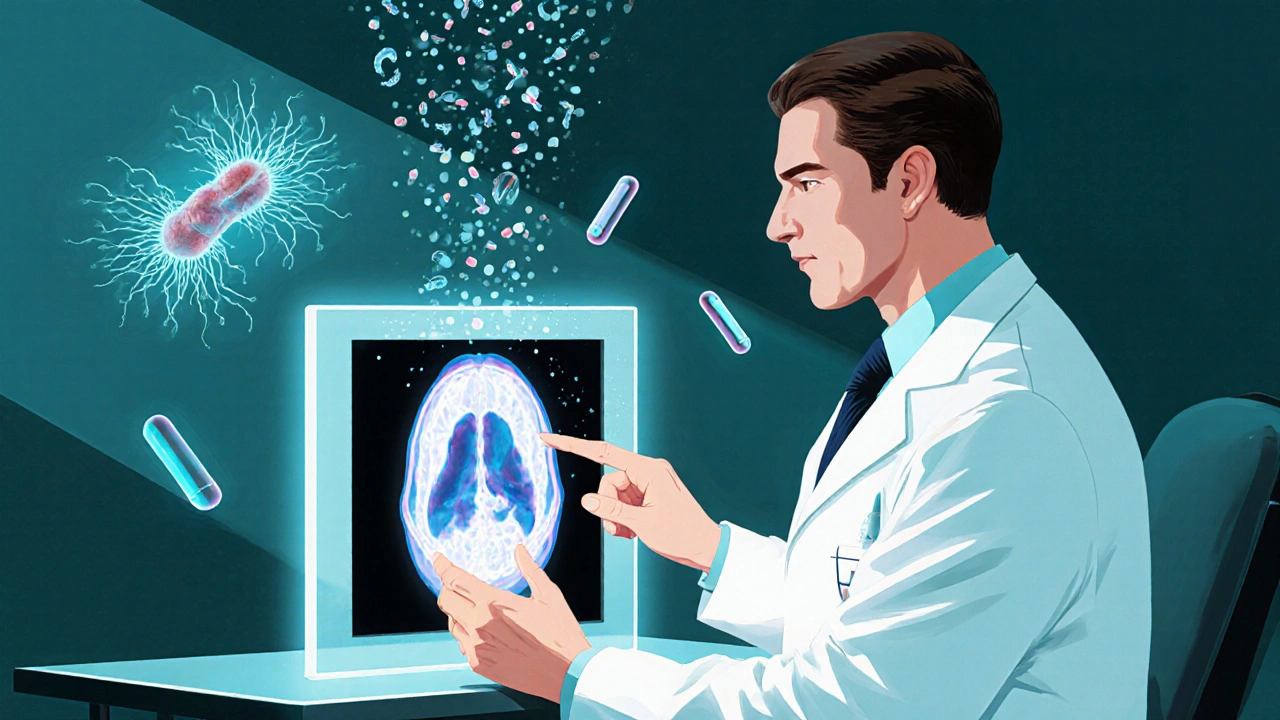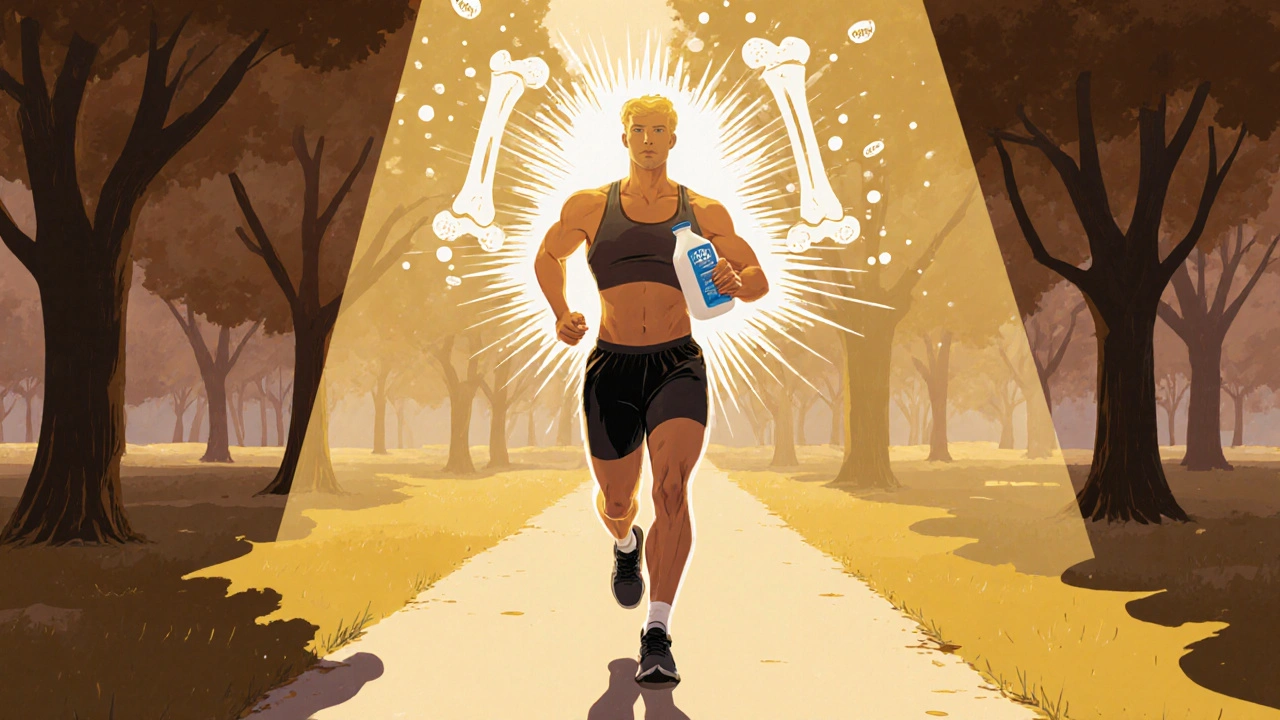Primidone Bone Health Risk Calculator
This calculator estimates your potential bone mineral density loss risk based on your primidone usage and lifestyle factors. Results are for informational purposes only and should not replace professional medical advice.
Estimated Bone Density Loss: 0%
Recommendations
Key Takeaways
- Primidone may lower calcium levels and modestly reduce bone mineral density (BMD) over long‑term use.
- The risk of osteoporosis is higher in patients on high‑dose or prolonged primidone therapy, especially if they have other risk factors.
- Regular BMD screening, adequate calcium and vitamin D intake, and weight‑bearing exercise can mitigate bone loss.
- Alternative antiepileptic drugs (AEDs) such as levetiracetam have a milder impact on bone health.
- Consult your clinician before making any changes to medication or supplement regimen.
When taking Primidone is a oral antiepileptic drug used mainly for controlling seizures and essential tremor, concerns about bone health often surface. Researchers have been piecing together whether the medication itself, the underlying seizure disorder, or lifestyle factors drive any observed bone changes. This guide breaks down the science, shows how the risk compares to other AEDs, and offers practical steps to keep your skeleton strong while staying seizure‑free.
Understanding Primidone
Primidone is a pro‑drug converted to phenobarbital and phenylethylmalonamide (PEMA) after ingestion. It works by enhancing the inhibitory neurotransmitter GABA (gamma‑aminobutyric acid), dampening neuronal firing. Typical adult doses range from 50mg to 1,500mg per day, adjusted according to seizure control and side‑effect profile.
Beyond its antiepileptic action, primidone is prescribed for essential tremor, a movement disorder that affects up to 4% of older adults. Because the drug is often taken long‑term, any chronic side‑effects-especially on the skeletal system-become clinically relevant.
How Bone Health Is Measured
Doctors assess bone health primarily through bone mineral density (BMD) scans, usually with dual‑energy X‑ray absorptiometry (DXA). BMD results are expressed as T‑scores; a score below -2.5 indicates osteoporosis, while scores between -1.0 and -2.5 suggest osteopenia.
Two nutrients are key to maintaining BMD: calcium and vitamin D. Calcium provides the mineral matrix, while vitamin D promotes intestinal absorption. Deficiencies in either can accelerate bone loss, especially in older adults.

What the Studies Say
Several cohort and case‑control studies from the past decade have examined primidone’s impact on bone. A 2021 Finnish registry analysis of 12,000 epilepsy patients found that users of primidone for more than five years had a 1.8‑fold increased odds of developing osteoporosis compared with those on carbamazepine, after adjusting for age, sex, and lifestyle factors.
Another prospective study in the United States (2022) measured serum calcium, vitamin D, and BMD in 200 patients newly started on primidone. After 24months, the primidone group showed a mean BMD loss of 2.3% at the lumbar spine, while the control group (no AED) lost only 0.5%. Serum calcium dropped by an average of 0.12mmol/L, and vitamin D levels were slightly lower but not statistically significant.
These findings suggest a modest but measurable effect, particularly with higher doses (>750mg/day) or in those with pre‑existing risk factors (e.g., low baseline calcium intake, sedentary lifestyle).
Mechanisms Linking Primidone to Bone Changes
While the exact pathway remains under investigation, three plausible mechanisms have emerged:
- GABAergic influence on osteoblasts: Osteoblasts-cells that build bone-express GABA receptors. Excessive GABA stimulation may suppress osteoblast activity, slowing new bone formation.
- Drug‑induced hormone alteration: Primidone’s metabolite phenobarbital can increase hepatic metabolism of vitamin D, leading to lower active 1,25‑(OH)₂‑vitamin D levels.
- Renal calcium handling: Some AEDs promote renal calcium wasting. Although data on primidone specifically are limited, animal models show increased urinary calcium excretion after chronic exposure.
The FDA has not issued a dedicated bone‑health warning for primidone, but the agency’s labeling does note “osteopenia reported in long‑term use” for several AEDs, prompting clinicians to monitor at‑risk patients.

Comparison with Other Antiepileptic Drugs
| Drug | Primary Mechanism | Average BMD Change (2yr) | Calcium/VitaminD Effect | Notes |
|---|---|---|---|---|
| Primidone | GABA enhancement, phenobarbital metabolite | ‑2.3% (lumbar spine) | ↓ serum calcium (‑0.12mmol/L) | Risk rises with dose>750mg/day |
| Levetiracetam | Synaptic vesicle protein 2A binding | ‑0.4% | No significant change | Considered bone‑friendly |
| Phenobarbital | GABA‑A receptor agonist | ‑3.1% | ↓ vitaminD activation | Higher osteopenia incidence |
| Valproate | Histone deacetylase inhibition | ‑1.5% | Variable; may increase bone turnover markers | Monitoring advised for women of child‑bearing age |
The table shows that while primidone does affect bone, drugs like levetiracetam carry far less risk. This information helps clinicians weigh seizure control against long‑term skeletal health.
Practical Tips for Patients on Primidone
If you’re prescribed primidone, you don’t have to accept bone loss as inevitable. Here are evidence‑backed actions:
- Baseline and follow‑up BMD scans: Get a DXA scan before starting therapy and repeat every 2-3years, or sooner if you have additional risk factors.
- Calcium intake: Aim for 1,000mg/day (1,200mg if over 50years). Dairy, fortified plant milks, leafy greens, and supplements can help.
- VitaminD supplementation: 800-1,000IU daily is generally safe; have your blood level checked annually.
- Weight‑bearing exercise: Activities like brisk walking, resistance training, or dancing boost bone formation.
- Limit alcohol and smoking: Both accelerate bone loss and interfere with medication metabolism.
- Medication review: Discuss with your neurologist whether dose reduction or switching to a bone‑friendly AED is feasible.
Remember, abrupt discontinuation of primidone can trigger seizures, so any changes must be medically supervised.
Frequently Asked Questions
Does primidone cause fractures?
Fracture risk is modestly higher, mainly in patients who already have low BMD or who combine the drug with steroids or other bone‑weakening agents. Adequate calcium, vitaminD, and regular exercise can offset most of the added risk.
Can I take calcium supplements while on primidone?
Yes. Calcium supplements are safe and often recommended. Choose a calcium citrate form if you have reduced stomach acid, and split the dose (e.g., 500mg twice daily) for better absorption.
Is vitaminD testing necessary?
Testing is advisable at baseline and then every 1-2years, especially for patients over 40, those with limited sun exposure, or anyone with a prior history of osteoporosis.
Should I switch to another AED to protect my bones?
Switching may be beneficial if you have multiple risk factors. Levetiracetam and lamotrigine have the best bone‑health profiles. Discuss benefits and seizure‑control implications with your neurologist before making any changes.
How often should I get a bone density scan?
A baseline DXA before starting primidone is ideal. After that, repeat every 2-3years, or sooner if you notice a rapid decline in calcium levels, start steroids, or experience a low‑impact fracture.
Staying informed and proactive lets you enjoy the seizure‑control benefits of Primidone and bone health without compromising your skeleton. Talk to your healthcare team, get the right labs, and keep moving-your bones will thank you.




Patricia Echegaray
October 17 2025Ever wonder why the big pharma giants never shout about the bone‑weakening side‑effects of Primidone? They’re too busy lining their pockets to let us know that the drug can stealthily sap calcium while you’re busy worrying about tremors. The shadows they hide behind are full of secret studies that never see the light of day. Keep your eyes peeled, because the truth about bone loss is being kept under lock and key.